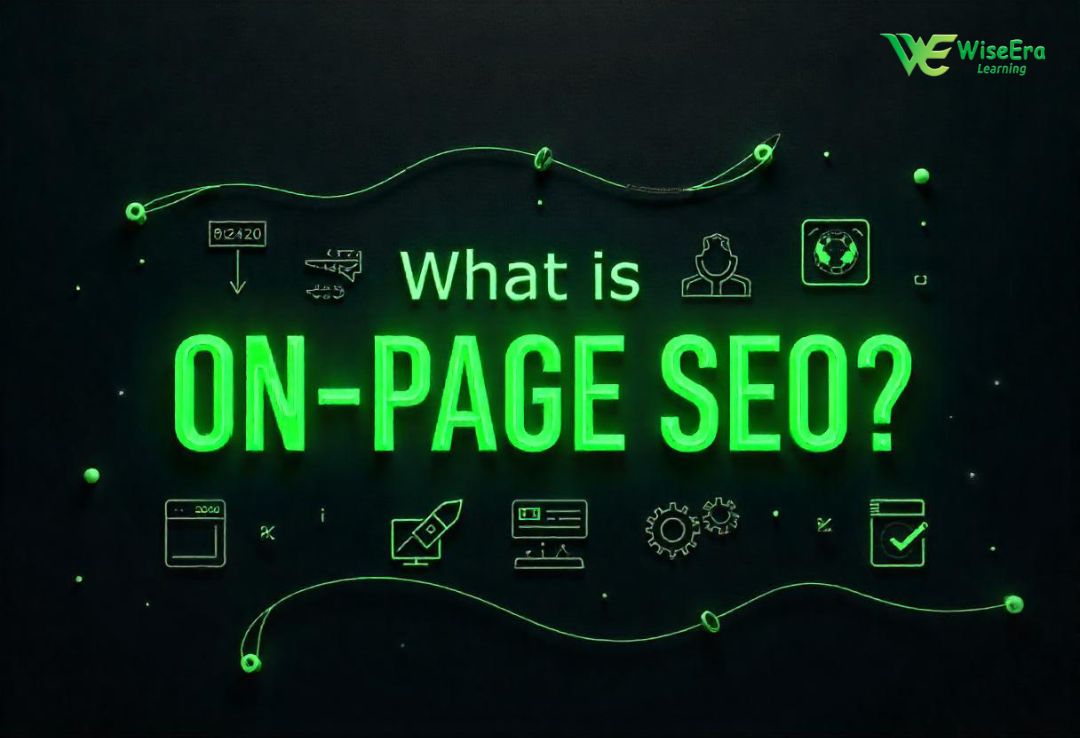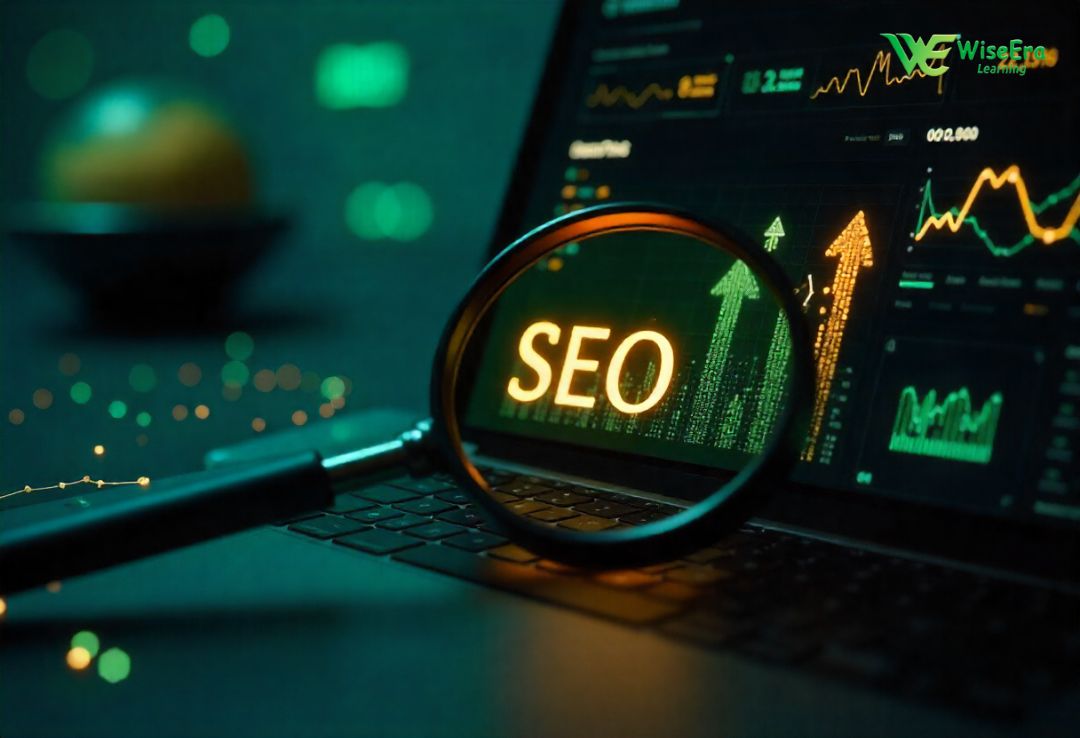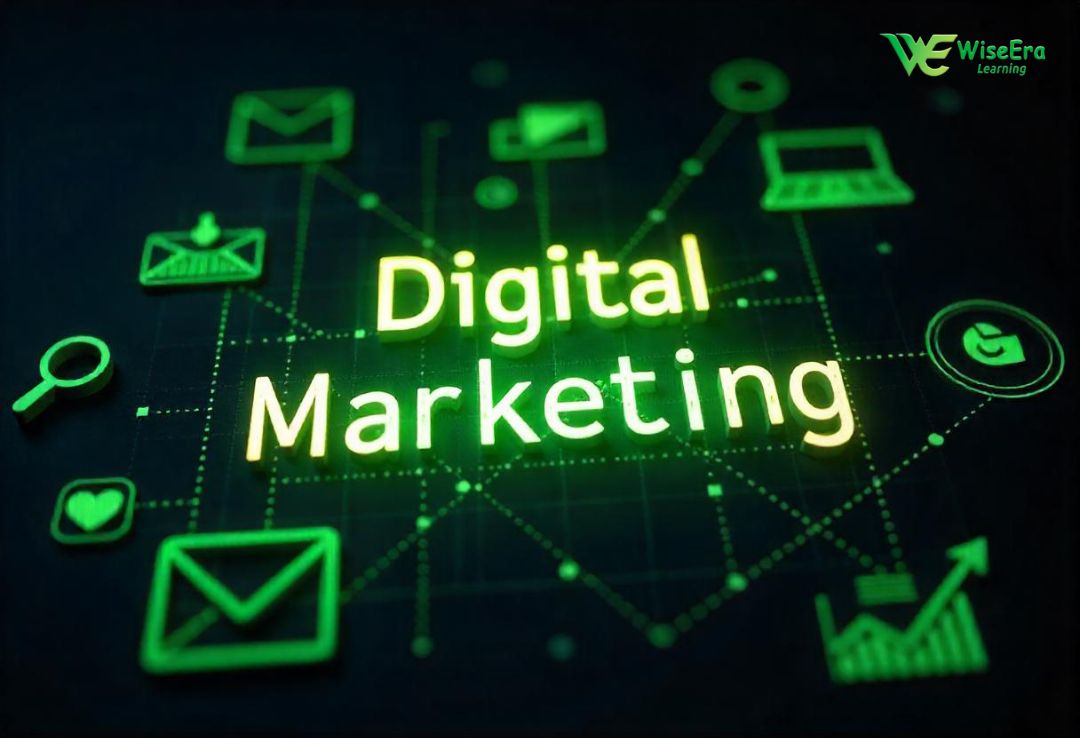
Most people who are involved in any kind of online business or who create websites know about SEO. Nevertheless, a lot of them tend to focus too much on off-page SEO, like backlinks, while ignoring the on-page SEO aspect. It all starts with visibility. A beginner or someone with little experience must take on-page SEO seriously and apply it correctly to ensure that search engines can see their sites easily.
In simple words, on-page SEO is everything that affects the ranking of your website and that can be controlled within; this may include but is not limited to content, keywords, images, headings, etc. This is what you should want for users and not for Google only—something that flows well and is very valuable!.
This article provides an in-depth analysis of On-Page SEO. We have made sure to explain the most vital elements in plain words that can help one improve their rankings and follow some techniques for a better project optimization aiming at increased visitors’ flow, which would be converted into clients’ trust as well! So, let’s begin!
Table of Contents
- What is On-Page SEO?
- Why is On-Page SEO Important?
- Difference Between On-Page and Off-Page SEO
- Role of Keywords in On-Page SEO
- How to Do Keyword Research for On-Page SEO
- Crafting an Effective SEO Title
- Importance of Meta Descriptions
- Using Header Tags (H1–H6) Correctly
- Best Practices for URL Structure
- Importance of Internal Linking
- Strategic Use of External Links
- Optimizing Images for SEO
- Writing High-Quality, User-Focused Content
- The Role of Content-Length in SEO
- Avoiding Keyword Stuffing
- Mobile Responsiveness and On-Page SEO
- Improving Page Speed
- Using Schema Markup
- Importance of User Experience (UX)
- On-Page SEO Audit Checklist
- Common On-Page SEO Mistakes to Avoid
- FAQs
- Conclusion
- Disclaimer
1. What is On-Page SEO?
On-page SEO refers to the process that involves making changes on websites so that they may be easily found in search engines when certain keywords are used. Some examples include adjusting the HTML or content. This consists of content optimization, meta tags, URLs, image optimization, and internal linking. Off-page SEO depends on backlinks, among other external factors, for optimization, while on-page SEO gives one the authority to determine how the search engine should read through the site.
It’s like arranging everything in your store so that every visitor—be it human or robotic—will see what goods are available there. On-page SEO provides the base, ranging from keyword application to user-friendly navigation structures.
2. Why is On-Page SEO Important?
Your content may be excellent, but search engines will not understand it well if there is no good on-page SEO. This kind of SEO makes sure that your web pages can easily be found by internet users and contain information that relates to their search queries. As competition continues to rise, tweaking your site here and there might just place you at a favorable position within the first few slots.
Proper on-page SEO improves:
- Organic rankings
- Click-through rates
- User engagement
- Conversion rates
This is what creates a good website for Google and visitors as well.
3. Difference Between On-Page and Off-Page SEO
| Factor | On-Page SEO | Off-Page SEO |
| Control | Fully controlled by site owner | Not directly controlled (external) |
| Focus | Content, structure, HTML optimization | Backlinks, brand mentions, social media |
| Examples | Meta tags, keywords, internal links | Guest posts, forum links, influencer mentions |
| Tools | Yoast SEO, Rank Math | Ahrefs, SEMrush, Moz |
Understanding both is essential for holistic SEO, but on-page SEO is where it starts.
4. Role of Keywords in On-Page SEO
On-page SEO heavily relies on keywords. These words communicate the message of your content to search engines. It is important that you have:
- Primary keyword: The main topic of your page (what is on-page SEO)
- Secondary keywords: Other relevant terms (e. g., on-site SEO, SEO content)
- Long-tail keywords: Extended keyword phrases which are very specific and usually designed to hit the SEO concepts alone.
Use them into:
- Titles
- Headings
- Body text
- Image alt texts
- Meta descriptions
But avoid overstuffing—use them naturally.
5. How to Do Keyword Research for On-Page SEO
Start with tools like:
- Google Keyword Planner
- Ubersuggest
- AnswerThePublic
- SEMrush
Steps:
- Locate appropriate main keywords
- Recognize extended tail variations
- Evaluate search volume and difficulty
- Examine competitive pages
- Categorize keywords by intent (informational, transactional, etc.)
When you pick the right keywords, you make certain that your content is in line with what users are searching for.
6. Crafting an Effective SEO Title
The initial thing that both internet surfers and engines of exploration will see is the SEO title. Ensure that it:
- Contains your main keyword
- 60 characters or less
- Compelling and related
- Incorporates power words or figures
Example:
“What is On-Page SEO? Complete Beginner’s Guide (2025)”
It should be able to reflect the content and increase click-through rate.
7. Importance of Meta Descriptions
A meta description is a brief summary shown in search results. While not a direct ranking Meta descriptions are short summaries displayed on search engine result pages. They don’t directly influence ranking, but improve CTR.
Recommendations:
- Primary and secondary keywords should be present
- It should not exceed 160 characters in length.
- Emphasize the worthiness of the content
- Enrich it with a call to action (CTA)
Example:
“Discover the simple 2025 beginner’s guide of on-page SEO and its relation with top SERPS rank?”
8. Using Header Tags (H1–H6) Correctly
Your content can be divided into structured, readable sections by making use of header tags.
- H1: Main title (used once)
- H2s: Major sections
- H3–H6: Subsections
Why it matters:
- Enhances readability
- Assists in search engine understanding of content hierarchy
- Enhances accessibility
Naturally, incorporate keywords within headers for SEO advantage.
9. Best Practices for URL Structure
Your URL should be short, clean, and keyword-rich.
Good URL:
yourwebsite.com/what-is-on-page-seo
Do not use:
- Long sequences of digits
- Symbols
- Common non-significant words (e. g., “and”, “of”, etc.)
Opt for hyphens instead of underscores. Ensure that the length does not exceed 60 characters.
10. Importance of Internal Linking
Internal links are those that take visitors from one page to another page on the same website.
Advantages:
- Retains visitors for extended periods on the site
- Facilitates crawling and indexing by Google
- Spreads out the authority of a page
The anchor text should be descriptive enough and include secondary keywords with links pointing at related blog posts or service pages.
11. Strategic Use of External Links
Credibility and trust are indicated by outbound or external links from credible sources.
Hints:
- Link to high DA websites
- Avoid broken links
- Use external links sparingly
- Add nofollow attribute if needed
Examples:
- Link to Google’s official guidelines
- Cite studies or stats from trusted publications
12. Optimizing Images for SEO
Pictures improve how users feel about a site and also make it easier to read through content. Nonetheless, they must be optimized for on-page SEO as follows:
Checklist:
- Optimize images for on-page SEO as follows:
- Use descriptive filenames (e. g., on-page-seo-example. png)
- Add alt text with relevant keywords
- Compress for faster loading (use TinyPNG or ShortPixel)
- Use WebP format if possible
- Provide context with captions if necessary
Optimized images contribute to better accessibility, faster load times, and Google Image rankings.
13. Writing High-Quality, User-Focused Content
The heart of On-Page SEO is content. Ensure that your content is able to:
- Provide solutions to readers’ problems
- Unique and deeply investigated
- Simple to comprehend (use short sentences and bullet points)
- Naturally, it should have the main, additional and long-tail keywords included.
In its content Google looks at Experience, Expertise, Authoritativeness, Trustworthiness (E-E-A-T).
Example:
Give tips that can be applied based on some facts or personal knowledge instead of meaningless words.
14. The Role of Content-Length in SEO
Content that is longer ranks better because it:
- Goes into depth on subjects
- Increases the time people spend on your site
- Leads to additional links and reposts
Recommended blog size: 2000–3000+ words
Nonetheless, one should remember that other than being lengthy, the content should also have depth, relevance, and clarity. For improved results, utilize content hubs or topic clusters.
15. Avoiding Keyword Stuffing
Keyword stuffing is when one uses too many keywords that it makes the content appear as if it’s spam.
Avoid this:
“This on-page SEO blog on on-page SEO shows on-page SEO techniques.”
Instead:
To avoid keyword stuffing, it is important to employ different form of a key word or even better a synonym in some places. Ensure you have a keyword density between 1% to 2%..
Focus on natural flow, not just inserting keywords into text.
16. Mobile Responsiveness and On-Page SEO
More than 60% of the traffic is currently generated through mobile gadgets. Google uses mobile-first indexing, so your website needs to be:
- Responsive (changes depending on the size of the screen).
- Easily navigable on smartphones.
- Quick to load over mobile connections.
Test your site with Google’s Mobile-Friendly Test tool.
It does not matter how good you may be with your desktop SEO because a bad mobile UX will just pull down your rankings.
17. Improving Page Speed
It is certain that page speed affects ranking. Users get angry with slow websites, which in turn decrease conversions.
Some ways to enhance it are:-
- Image compression
- CDN usage (Content Delivery Network)
- Minify CSS, JS, and HTML
- Enable browser caching
- Reduce redirects
- Tools: Google PageSpeed Insights, GTmetrix, Lighthouse
Try to achieve a load time below 3 seconds.
18. Using Schema Markup
One can enhance the manner in which the outcomes show on SERPs and hence increase CTR by adding schema markup which is supported by structured data that makes it easier for search engines to understand the content of your site and display rich snippets.
Several kinds include:
- Article
- FAQ
- Product
- Review
- How-to
There are various tools that can be used such as Google’s Structured Data Markup Helper or even plugins like Schema Pro.
19. Importance of User Experience (UX)
Google recognizes websites which are engaging to visitors, and this is shown by:
- User-friendly site
- Visible call-to-actions
- Clear CTAs
- User-friendly site
- Readable fonts
- Readable font sizes
- Few popups
- Few popups
The bounce rate, dwell time and conversion rate are dependent on the user experience, and they eventually affect the rank of a site.
20. On-Page SEO Audit Checklist
Before you publish a page, consider this short list:
✅ Title tag that contains the primary keyword
✅ Meta description should be less than 160 characters
✅ Headers optimized for keywords
✅ Neat and brief URL
✅ Both inbound and outbound links
✅ Images optimized (alt-text & compression)
✅ Mobile compatibility
✅ Page loading below 3 seconds
✅ Included schema markup
✅ The content should be original, comprehensive, and aimed at users.
✅ Avoid excessive use of keywords.
It is important to carry out regular checks to maintain a steady SEO progress.
21. Common On-Page SEO Mistakes to Avoid
In order to remain in the good sides of Google, ensure that you do not have the following:
1. Missing or duplicate title tags
2. No meta descriptions
3. Using non-SEO-friendly URLs
4. Overusing keywords
5. Ignoring image optimization
6. Thin or duplicate content
7. No internal links
8. Ignoring mobile users
9. Not updating old content
Correct these and experience a quick increase in your SEO efforts.
FAQs
1. What is the difference between on-page and off-page SEO?
On-page SEO is all about those things that are done within the website for example content and linking structure. Off-page SEO involves link building among other factors.
2. How many keywords should I use per page?
Ensure to have 1 primary keyword, 2-3 secondary keywords, and 1-2 long-tail keywords, but again emphasize using them naturally.
3. Is Google ranking affected by on-page SEO?
Definitely, this is one of Google’s primary signals when it comes to ranking sites. If you don’t optimize your pages, then you might never be able to reach out to your readers.
4. How often should I update on-page SEO?
Analyze and modify it every 3-6 months. Things like trends change and ranking factors evolve with time too. Ensure to keep the content fresh and relevant.
5. Can I do on-page SEO without technical skills?
Absolutely. Content optimization or changing layout make up most of the on-site SEO techniques that do not need any programming skills. And now there are even better tools than ever, such as Yoast SEO or Rank Math.
6. Are meta tags still relevant in 2025?
Definitely! Most meta tags may not change anything in terms of rankings, but some, like meta titles and descriptions, play a crucial role in determining how many people click on your links, hence indirectly influencing your SERP positions.
7. Should I use exact match keywords in headings?
Naturally use them. Although they contribute positively, ensure that you maintain natural flow without being mechanical
Conclusion
It is important that you have realized the on-page SEO and its importance in relation to success online. Optimizing your content and images and using internal links and schema markup will contribute every bit towards making your site rank high.
This means that optimizing content for search engines is not something you do today and forget about tomorrow; it should always be done. Keep learning, keep testing, and above all, keep optimizing. This is what determines if your website can be seen easily, whether people will respect it, and if they can rely on it.
With this in mind, do you plan to put into action these on-page SEO strategies to enhance your website going forward?
Disclaimer
This blog is for educational and informational purposes only. Even though we have tried to follow the latest updates, it is important to remember that SEO is always evolving.





